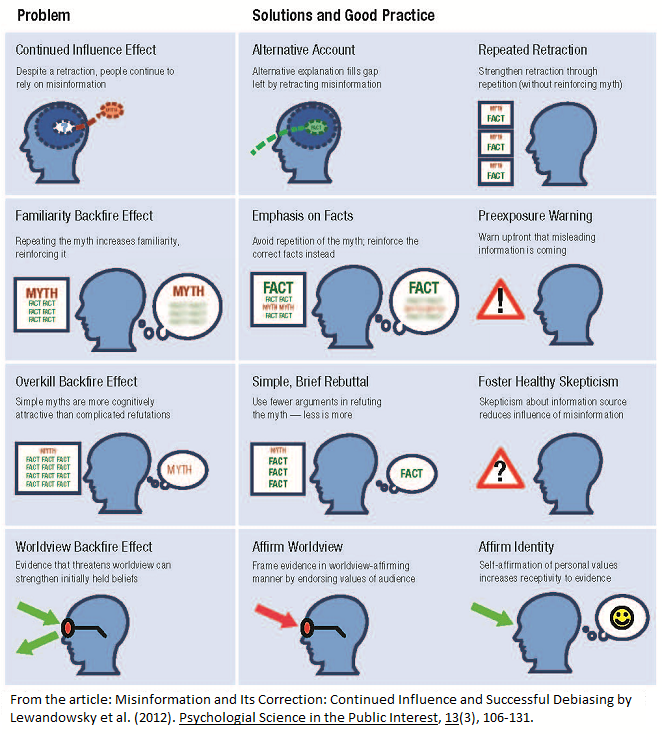I read an article last week in Scientific American that has implications about the field of customer experience management (CEM). The article, Diss Information: Is There a Way to Stop Popular Falsehoods from Morphing into “Facts”?, discusses the phenomenon of widely held beliefs that are not true. Think about President Barack Obama’s US citizenship status still being questioned even though he has released his birth certificate and his birth in Hawaii has been corroborated by the news media. Despite these facts, 51% of voters in the 2011 Republican primary election believed Obama was born abroad.
Phenomena that are even supported by sound, scientific evidence are not immune to misinformation. Think about people who believe that global warming is not caused by humans. Think about people who believe that vaccines cause autism. Even our own elected officials believe that women have magical vaginas capable of preventing pregnancies in cases of “legitimate” rape (see Rep Todd Akin’s remarks) and that the earth is only 9000 years old (see Rep. Paul Brown’s remarks). Despite the preponderance of scientific evidence to the contrary, people still hold these beliefs.
Misinformation in Customer Experience Management
I feel that the misinformation machine is going strong in the field of CEM. I have written about CEM practices that are good examples of unsubstantiated beliefs: 1) measuring employee engagement is key to driving better business outcomes (e.g., higher customer loyalty, increased employee performance, business growth) and 2) the Net Promoter Score (NPS) is the best predictor of business growth (better than satisfaction and other loyalty questions).
In my research, however, I found little support for these claims. Specifically, most measures of employee engagement are only relabeled measures of employee satisfaction. So, researchers using these questionable “employee engagement” measures are really studying the phenomenon of employee satisfaction, not employee engagement; thus, attributing growth to employee engagement is not warranted. With respect to the the misinformation about the NPS, I and others have found that other questions of customer loyalty are equally good as the NPS in predicting business growth; also, different types of loyalty questions predict different types of business growth.
While these CEM-related examples have much less significance to the general public, they still represent beliefs that, I think, impede progress in our field, both practical and theoretical. Even though the CEM misinformation machine is not necessarily driven by dishonest people, the lack of dishonestly does not minimize misinformation’s impact on progress.
Combating Misinformation

Figure 1. Graphical summary of findings from the misinformation literature relevant to communication practitioners. The left-hand column summarizes the cognitive problems associated with misinformation, and the right-hand column summarizes the solutions. Figure is from the article by Lewandowsky et al. (2012).
Trying to combat misinformation is no easy matter. For example, referred to as confirmation bias, people tend to seek out information that supports their preexisting beliefs. Also, accepting information is cognitively easier to do than evaluating their merits. So, how can you combat misinformation? Lewandowsky et al. (2012) found ways to debunk misinformation and created a nice summary of their research (see Figure 1) on what deliverers of information can do. They are:
- Provide alternative explanations. These alternative explanations fill in the gap that is left by retracted information.
- Repeat retractions without reinforcing the misinformation.
- Avoid too much repetition of the myth. Instead, reinforce the correct facts.
- In your communications, warn your audience when you are going to introduce the misinformation.
- Make your rebuttal brief and simple when refuting the misinformation.
- Promote skepticism. Focusing on the information source will reduce the impact of the misinformation.
- If your content is threatening to the worldview and values of your audience, present your point of view in a “worldview-affirming manner (e.g., by focusing on opportunities and potential benefits rather than risks and threats).”
Summary
Misinformation is all around us. Using the misinformation to form a belief can be detrimental not only to the holder of that belief but the people around them. Yet, once held, these beliefs can be very hard to change. Researchers have found several ways to combat misinformation. Try these next time you are confronted with misinformation. Provide alternative explanations in a simple, concise way. Additionally, encourage skepticism in your audience. Perhaps skepticism is nothing more than what my nephew refers to as “the smell test.” A tendency for your audience to adopt a skepticism about information leads them to ask their own critical questions about claims that simply don’t smell right. Finally, if your new information is threatening to your audience, try to focus your communication on how your information provides opportunities and potential benefits to your audience to move forward.



 Beyond the Ultimate Question
Beyond the Ultimate Question Measuring Customer Satisfaction and Loyalty (3rd Ed.)
Measuring Customer Satisfaction and Loyalty (3rd Ed.)
Thanks for this, yes NPS is just CSAT rebranded. Another Myth is around CEM. This is just Customer Insight in different clothes. Where is the critique? It seems to me that people use this fluff CEM loosely and in a meaningless way. Unfortunately, there is a complete failure of critical thought in many quarters when your job depends on the industry. This gives succour to fraudsters and con-merchants in this and other markets. More aggressive scepticism is required, not least from HBR that propagates this rubbish.